|
Cutting emissions
|
|
|
|
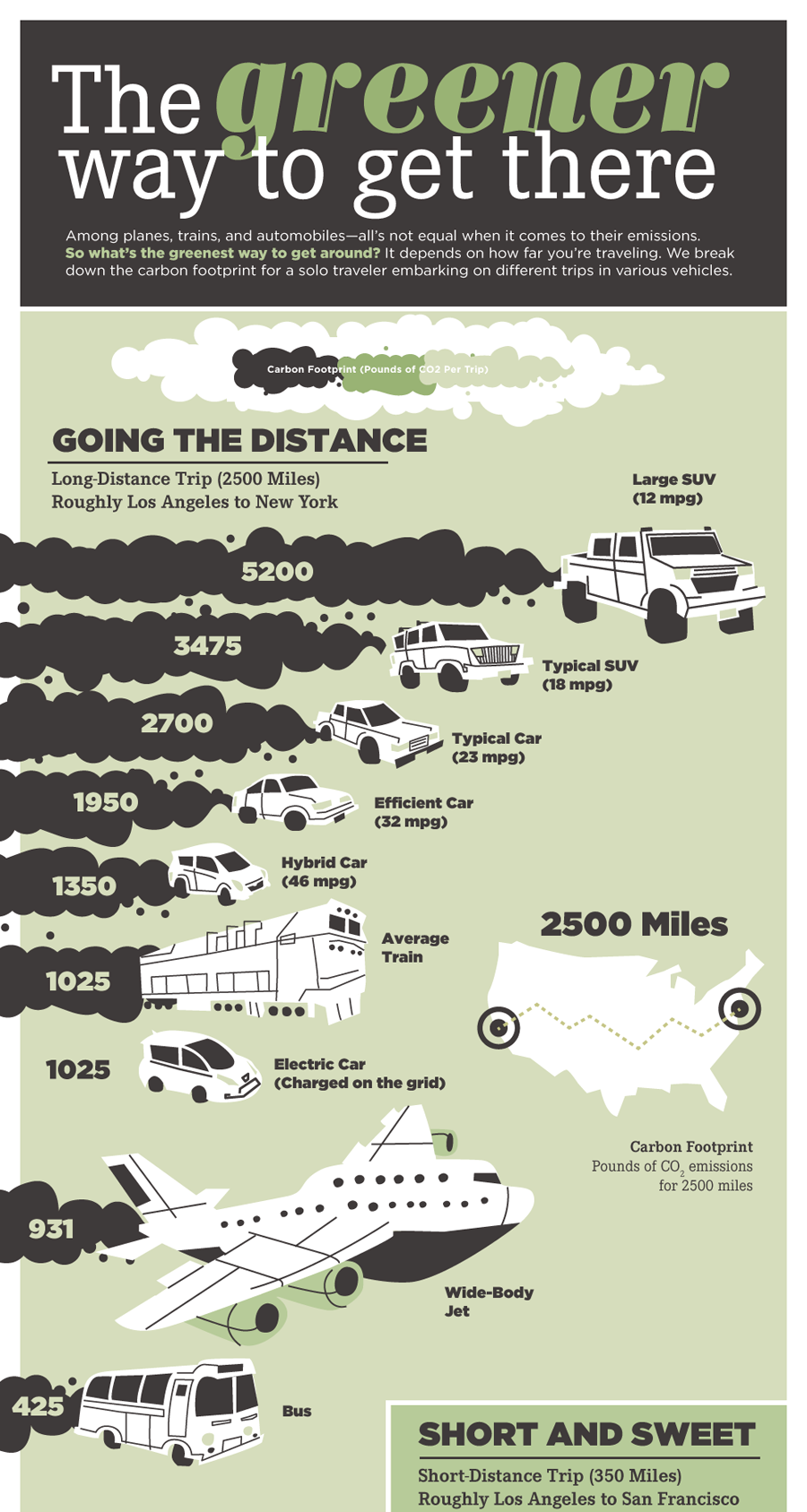 |
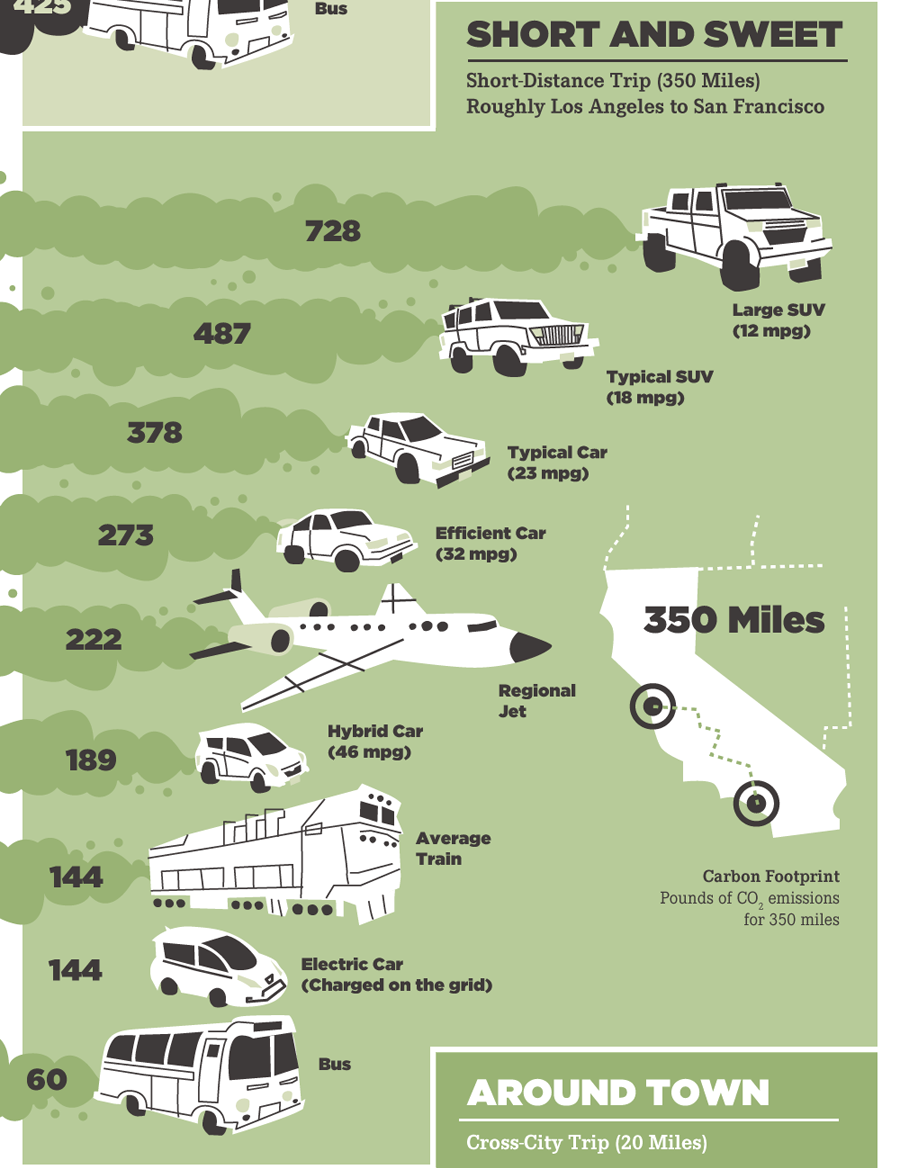 |
|
Click on the image below to see the entire infographic
|
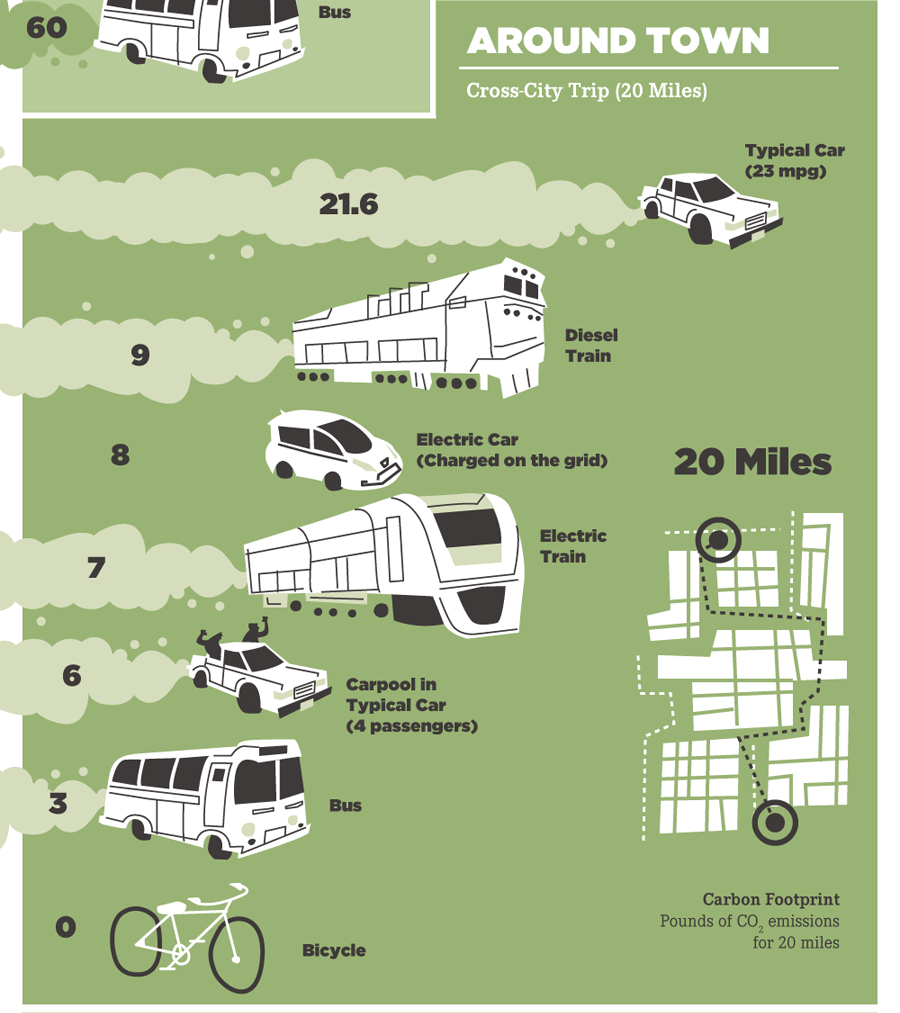 |
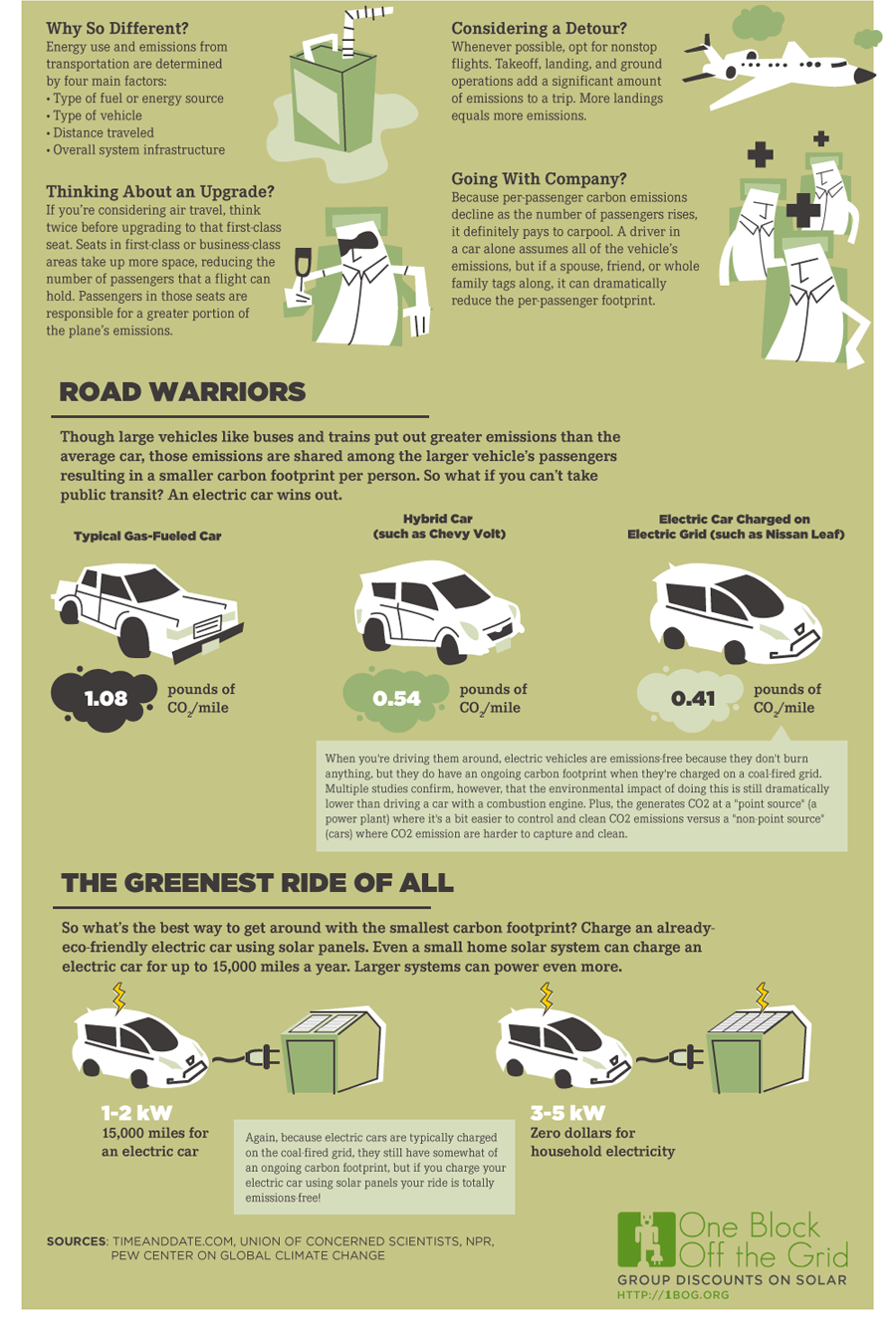 |
|
 |
Buses are right after bicycles in terms of distance traveled on 1 tonne of CO2!
|
|
A bus can travel 146,000 passenger-kilometres for each tonne of CO2 emitted, while a car can only travel 26,000 passenger-kilometres. That means that a car would have to emit 5.6 tonnes of CO2 just to travel the same distance as the bus!
|
|
|
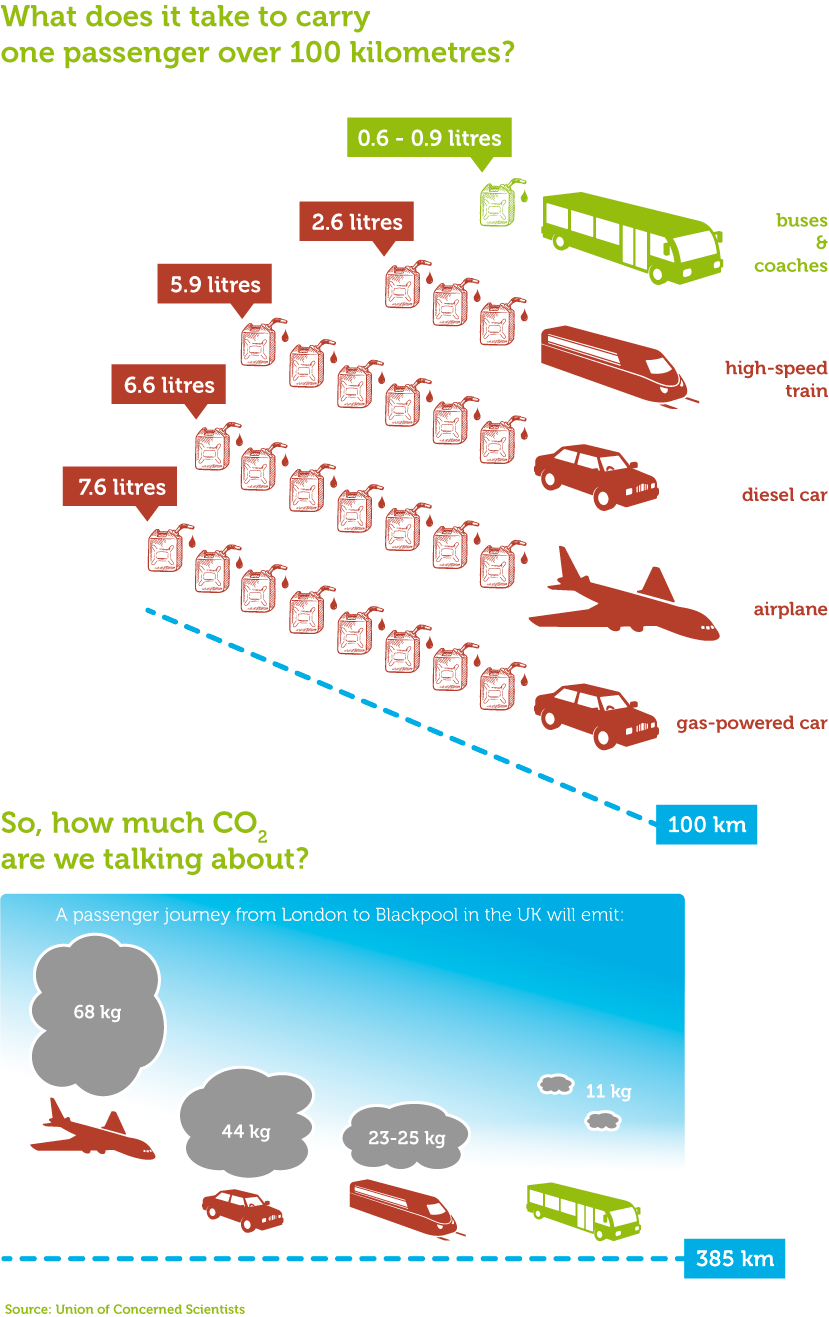
Source
Coaches emit 0.03 kg of CO2 per passenger-kilometre; half that of trains and radically smaller than the 0.11 kg emitted by cars and 0.18 kg by airplanes, UK data shows.
|
EcoManager has resulted in savings of over 12% fuel, 12% CO2 emissions, and 39% fewer accidents and is installed on thousands of buses and coaches across Europe.
|
| |
| Hybrids on the rise |
|
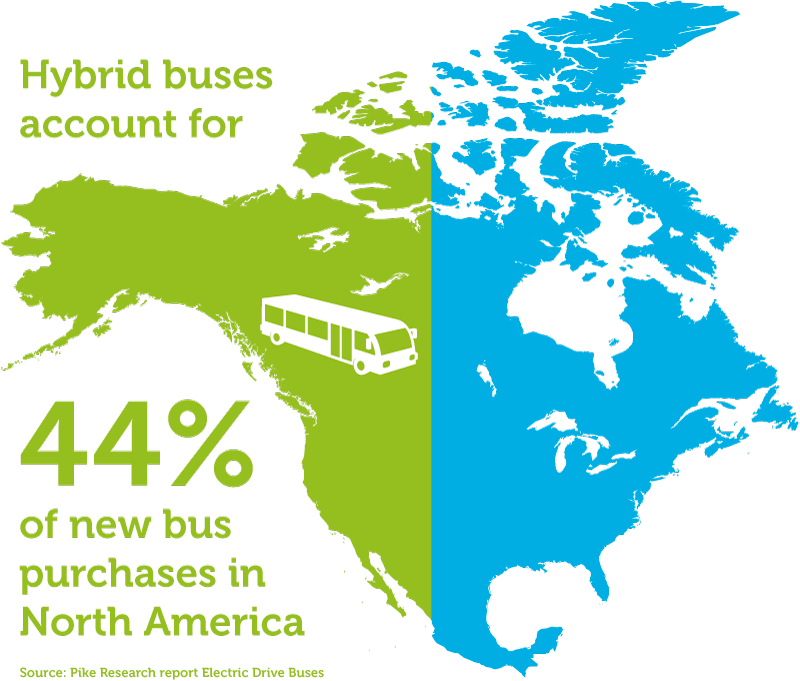
Source
Hybrid technology helps reduce fuel consumption and reduces emissions by 20 to 30% according to authorities in France.
Guadalajara is expecting to reduce carbon emissions by 60%, by using hybrid buses compared to conventional diesel buses.
In London, every low carbon bus saves around 26 tonnes of CO2 compared with its diesel equivalent.
The world’s longest bus has an eco-hybrid engine and seats 256 people.
|
| |
| Fighting congestion...and thus pollution |
|
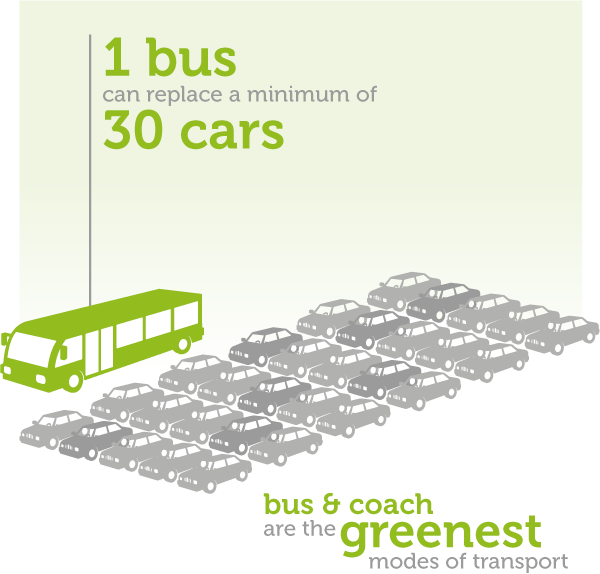 |
|
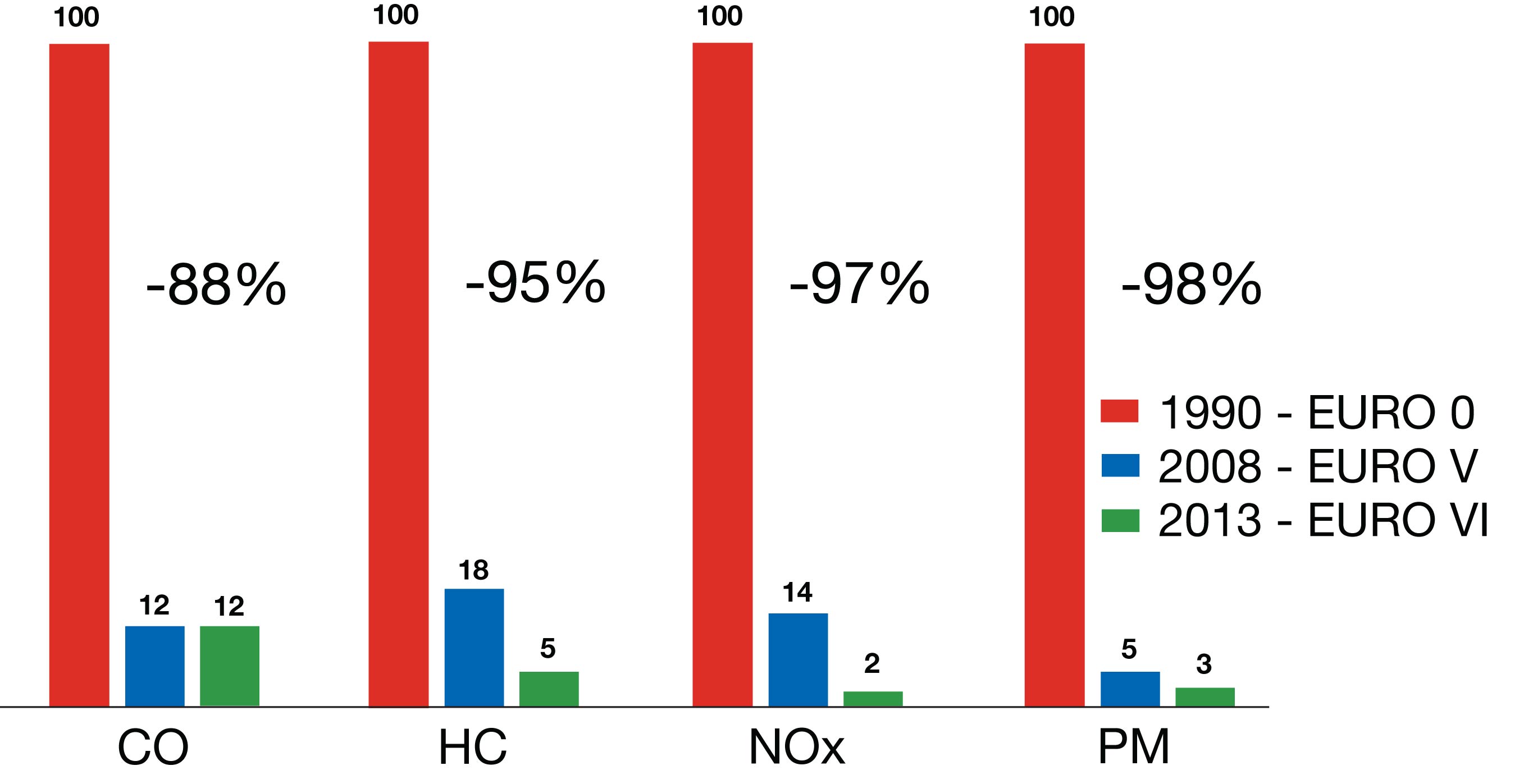
Noxious emissions reduction for heavy commercial vehicles, including buses and coaches.
Source: EU Commission, 2009
|
|
|
A £101 million package of improvements for buses, congestion and services was approved by UK Transport Minister Norman Baker.
|
| Silence of the electric lambs |
|
New electric buses in Coventry, UK, can be fully recharged in just 40 minutes.
Salzburg, Austria, recently ordered more electric trolleybuses for its urban transport system, which will bring its total to 65 by 2017.
15,000 electric buses will be sold in Asia Pacific by 2018 - 75% of the world total.
|
|
|
|
Green innovation
|
|
Buchanan Bus Station in Scotland has switched to solar bus stops with a £20,000 panel installation.
In most countries, 10% of the bus and coach fleet is renewed every year using the latest available technology in terms of environment friendliness, safety and comfort
Green innovation in tourism can drive sustainable development by reducing costs, boosting revenue, creating jobs and improving resource efficiency, but obstacles such as a lack of policy integration in tourism and transport must first be removed.
|














